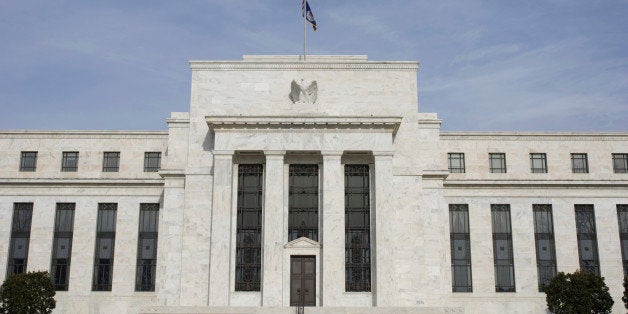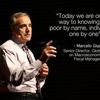
The US Federal Reserve's extraordinary monetary policy has been good for the developing world. Its commitment to fighting recession by keeping interest rates close to zero explains most of the surge in gross capital flows toward emerging and developing economies--as a proportion of the recipients' GDP, those flows grew by about half since the global financial crisis of 2008. But as the flows rose, they also became more volatile. Mutual, pension, and insurance funds began to replace banks as the main cross-border investors, while purchases of bonds grew four times faster than those of equity. This kind of portfolio holders have proven more sensitive to bad news--whether global or local.
Will those edgy portfolio investors stampede indiscriminately out of--and wreak havoc among--middle- and low-income countries if the Fed lifts interest rates this September, for the first time in almost a decade? Or will they differentiate and stay in well-managed economies with strong "fundamentals"? Our bet is on differentiation, with one proviso: that higher US interest rates do not trigger financial turmoil in Wall Street.
It is true that for the average developing country, macro fundamentals have been getting worse--not better. Its external position has weakened--the deficit in its balance of payments' current account deepened from 4.4 in 2010 to 7.5 percent of GDP today. So has its fiscal position--the deficit in its government's accounts more than doubled, from 2.1 to 4.7 percent of GDP. Its debt has grown--from 39 to almost 48 percent of GDP. It has fewer foreign currency reserves--in months of imports, they have fallen by almost one month to 5.4. And it lives in a world economy that is growing more slowly--at about three percent, not 5.4 as in 2010.
But that average country does not actually exist. Investors know that. When global markets were spooked by Greece in 2010 and by talk of "tapering" of US monetary policy in mid-2013 and, again, in early 2014, the sell-off of assets from emerging and developing economies was initially across the board, but soon enough reason prevailed and good performers were spared. This taught us a lesson: what causes indiscriminate withdrawals from emerging and developing markets is global financial volatility, not small and predictable changes in interest rates. In a recent paper, Swati Ghosh and her colleagues gathered sufficient data to assess the role that volatility plays in bond issuances by emerging and developing countries--the negative impact is huge. This may also explain why policy-makers in those countries are calling for the Fed to raise its interest rates--get it done and over with, so the uncertainty ebbs.
Which brings us to our proviso. If the Fed's decision to increase interest rates--were it to come to that--unveils systemic risk in the US financial markets and, thus, hikes global volatility, the exodus of portfolio investors from the developing world could be large, indiscriminate, and painful. Solid fundamentals will not be much of a protection.
How should a developing-country government prepare for such a thing? Textbooks and practice suggest five steps. First, secure financing for at least the next 24 months. Second, prioritize public investments, in case cuts are called for. Third, target social safety nets, to minimize leakages to those who do not need support. Fourth, stress test the banking system. What would happen to your banks if, all of a sudden, foreign currency became expensive and scarce? And, fifth, identify who will suffer if crisis strikes--who are the "winners" and "losers". This sort of "political economy analysis" is invaluable because it highlights the road-blocks in the decision-making process. Of course, it may be too late to do any of this now, and much of it should be done whatever the Fed decides. But it may help next time around.
